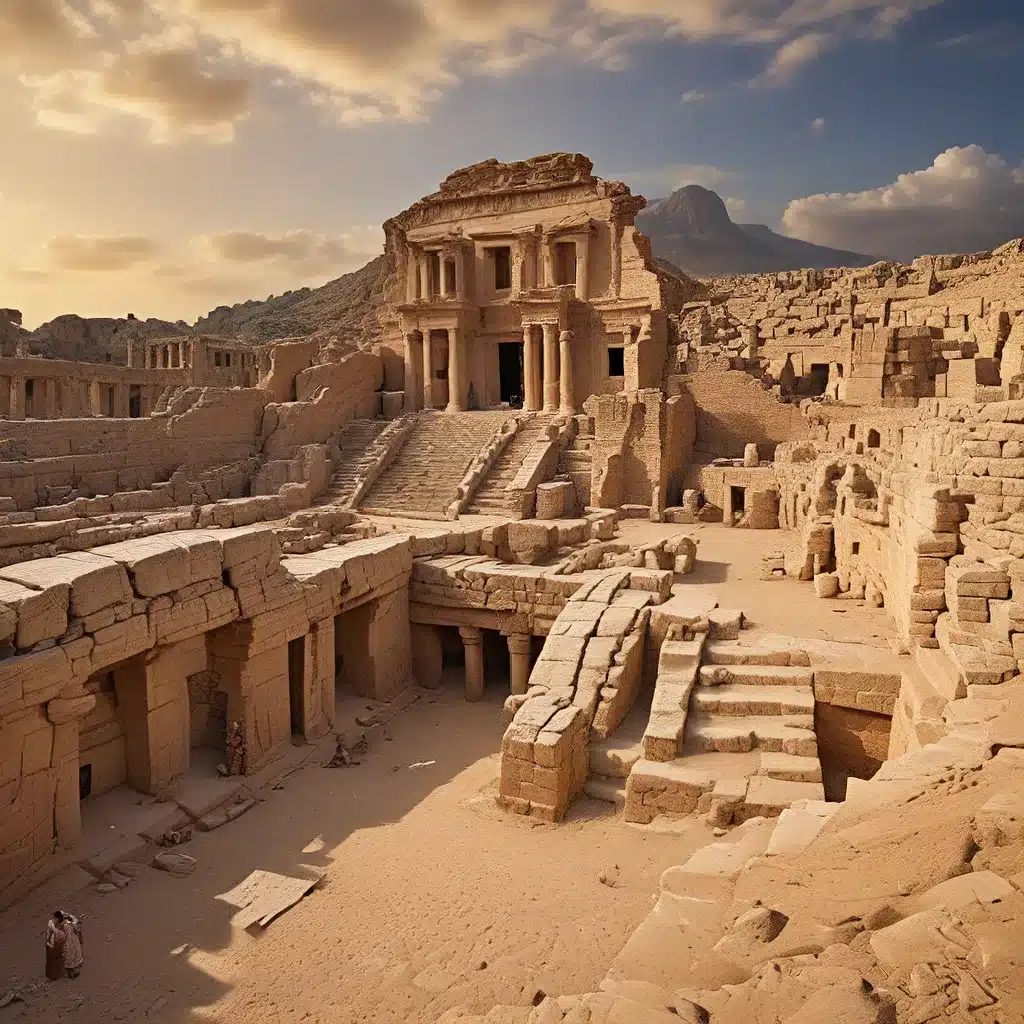
Unveiling the Secrets of Lost Civilizations
The world of archaeology is a treasure trove of mysteries, where the past collides with the present, unveiling tantalizing clues about long-forgotten civilizations. From sunken cities to perplexing artifacts, the ancient world has captivated the human imagination for centuries, leaving scholars and enthusiasts alike to unravel its myriad enigmas.
One such enigma is the Thonis-Heracleion, an Egyptian port city that once served as a major trading hub, only to vanish beneath the waves of the Mediterranean Sea. Discovered in the early 2000s by marine archaeologists, this real-life “Atlantis” has since yielded a wealth of artifacts, including colossal statues, animal sarcophagi, and even 2,400-year-old fruit baskets, shedding new light on the grandeur and sophistication of this ancient civilization.
Equally intriguing are the enigmatic stone jars of Laos, thousands of lichen-covered monoliths that have puzzled archaeologists for decades. Ranging in height from just one to 400, these Iron Age relics were once believed to be the wine glasses of giants, but more recent research suggests they may have served as funerary urns for a long-lost civilization. The challenge, however, lies in the fact that many of these jars are situated in fields of unexploded munitions, making their study a dangerous and delicate undertaking.
Challenging Conventional Wisdom
The ancient world is rife with mysteries that challenge our understanding of history and human development. Take, for instance, the Nazca Lines of Peru, a series of enormous geoglyphs etched into the arid coastal plain, depicting a menagerie of animals and geometric shapes. Despite decades of research, the purpose of these enigmatic drawings remains elusive, with theories ranging from water rituals to navigational aids for ancient seafarers.
Equally perplexing is the Paracas Candelabra, a massive geoglyph carved into a hillside overlooking Peru’s Pisco Bay. While pottery found at the site dates back to around 200 BC, the age and purpose of the candelabra itself remain a mystery, with some suggesting it may have served as a navigational tool for sailors, while others believe it represented the trident of a creator god.
The construction of ancient architectural marvels, such as the Inca fortress of Sacsayhuamán, also continues to baffle modern-day observers. How did the Inca laborers, armed with only bronze and stone tools, manage to move and fit together enormous rocks, some weighing as much as 125 tons, with such precision and skill?
Unsolved Mysteries and Enduring Legends
The ancient world is not only home to enigmatic archaeological sites but also to enduring legends and unsolved mysteries, some of which have captivated the public imagination for centuries. The disappearance of the Roanoke colonists in 1587 remains one of the biggest unsolved mysteries in American history, with the only clue being the mysterious word “CROATOAN” carved on a palisade.
The whereabouts of the Ark of the Covenant, a sacred chest believed to have contained the Ten Commandments, is another tantalizing mystery. After the Babylonian conquest of Jerusalem in 587 BC, the ark’s fate has been the subject of numerous legends and speculations, with some suggesting it was carried back to Babylon, while others believe it was divinely hidden, awaiting the arrival of a prophesied messiah.
Even the birth of Jesus Christ, one of the most influential figures in human history, remains shrouded in uncertainty. While most Christians today celebrate his birth on December 25th, scholars have long debated the veracity of this date, with some proposing that the chosen date may have been influenced by the Roman festival of Saturnalia, celebrated around the same time.
Emerging Technologies and New Discoveries
As the field of archaeology continues to evolve, researchers are leveraging cutting-edge technologies to uncover new insights and solve ancient mysteries. Andrea M. Berlin, a professor of archaeology at Boston University, explains that “every single new technology that has been made available to archaeologists beginning with carbon-14 dating in the 1950s has radically pushed the field.” From atomic reactors to advanced imaging techniques, these new tools have allowed archaeologists to delve deeper and uncover finer details, leading to a better understanding of the past.
Recent discoveries, such as the Yonaguni Monument off the coast of Japan, have also challenged conventional wisdom. This massive underwater rock structure, resembling a man-made step pyramid, has been the subject of intense debate, with some researchers arguing that it is the remnant of an ancient civilization, while others contend that it is merely a natural phenomenon shaped by tectonic forces.
As we continue to explore the ancient world, the mysteries of the past continue to captivate and inspire us, driving us to uncover the secrets that have eluded generations of scholars and enthusiasts. From the lost tombs of legendary figures like Cleopatra and Alexander the Great to the enigmatic Voynich Manuscript, the ancient world remains a vast and fascinating frontier, waiting to be unveiled.
Embracing the Unknown
The enduring allure of ancient mysteries lies in their ability to capture our imagination and challenge our understanding of the past. While some of these enigmas may never be fully solved, the pursuit of knowledge and the thrill of discovery keep archaeologists, historians, and enthusiasts alike engaged in the ongoing quest to unravel the secrets of the ancient world.
As we continue to explore the ruins of long-forgotten civilizations and uncover new artifacts, we are constantly reminded of the vast expanse of human history that still remains shrouded in mystery. By embracing the unknown and embracing the excitement of new discoveries, we can continue to expand our understanding of the past and its enduring legacy.
Whether it’s the lost tomb of Cleopatra, the missing Peking Man fossils, or the elusive identity of Jack the Ripper, the ancient world continues to captivate and inspire us, inviting us to delve deeper, to question our assumptions, and to uncover the hidden truths that lie beneath the sands of time.


